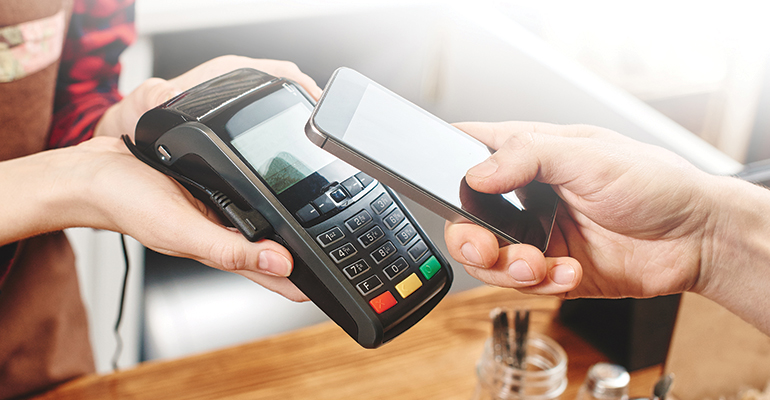How Contactless Payments Work & What They Are
There are two types of contactless payment methods: contactless cards and mobile wallets. Both allow consumers to complete a transaction by simply tapping their card or phone on a reader at checkout.
Contactless cards are similar to traditional credit and debit cards except that they have an RFID chip embedded in them. The chip enables the card’s owner to make payments without physically swiping it. Mobile wallets are digital wallets that allow users to store their payment information on their phones, including credit and debit card numbers, loyalty rewards codes and more.
Contactless payments have been around for years, but they have recently begun to gain traction among consumers. In fact, research from Boston Retail Partners shows that nearly half of all U.S shoppers surveyed plan on making contactless payments at least once per month this year—a big jump from just one-third who said the same thing last year
What is contactless payment?
Contactless payments are a form of mobile payment, but there are differences between contactless and other forms of mobile payment such as androidPay. With contactless payments, the customer simply waves their card or device over the terminal to complete a transaction. They don’t need to physically insert their card into the machine in order to make a purchase.
Contactless payments have been around for years, but many retailers still don’t accept them because they require special hardware and software upgrades that can be costly to install. However, more retailers are adding this capability because it offers a better experience for customers than traditional methods like swiping a card or inserting it into an ATM. Contactless payments also help prevent fraud because they don’t require customers to enter any PINs or passwords when making purchases with their cards or devices like pay with QR code.
How does contactless payment work?
Contactless payments transmit via cards and mobile devices, but they ultimately run through financial institutions, just like an old-fashioned credit or debit card payment. The exact mechanics vary depending on whether you make a card payment or a mobile wallet payment.
Card payments are processed by Visa and MasterCard networks, which are responsible for authorizing the transaction, routing it to your bank and collecting the funds from retailers.
Mobile wallets use near-field communication (NFC) technology to transmit payment information from the device to a retailer’s terminal. The technology transmits data via radio waves at close range, allowing users to pay without swiping their cards at checkout. It also allows merchants to accept payments without having to install new equipment as NFC chips are built into most smartphones today.
Card payments
NFC (Near Field Communication) is a short-range wireless technology that allows two devices to exchange data when they’re in close proximity. In the context of NFC payment apps, this means that you can tap your phone against a payment terminal to pay for a purchase.
The majority of tap-to-pay transactions involve physical credit or debit cards. These cards come with an embedded radio frequency identification (RFID) chip that can transmit all of your card information to a payment terminal. If your credit card company has issued you a new card within the past year, it more than likely contains such a chip.
NFC payment apps allow you to use your smartphone in place of these traditional cards. The app reads the information from your phone’s NFC chip and transmits it to the merchant’s point-of-sale system, just as if you had swiped your physical card through their reader.
Mobile wallet payments
The customer taps or hovers their mobile device. This works just like the card model. The phone or wearable device communicates using a near-field communication (NFC) radio, which is a close cousin of RFID chips.
The payment terminal reads the data from your phone or wearable device and processes it. The terminal sends the payment information back to our processor, which then sends it on to your bank or financial institution for authorization.
